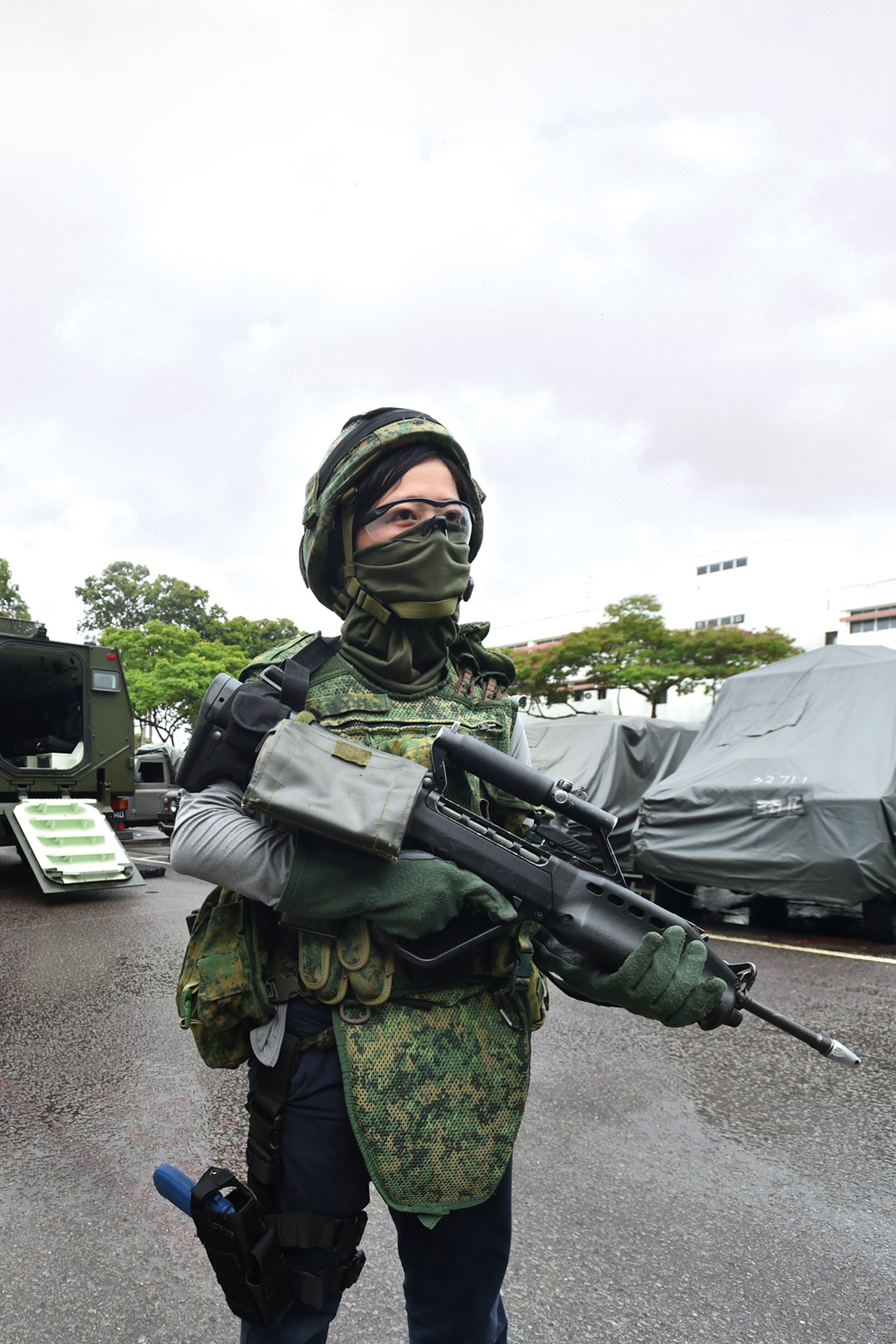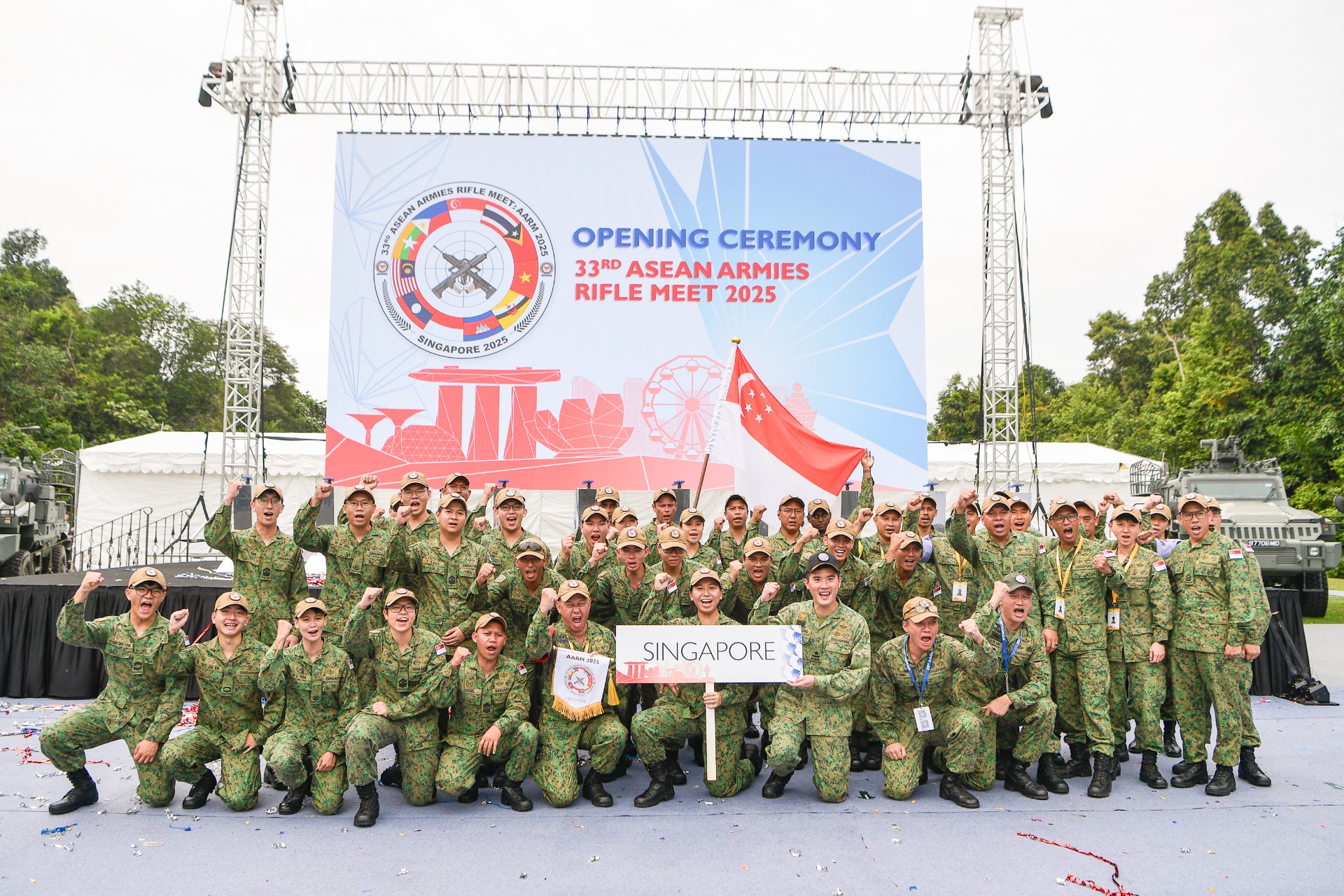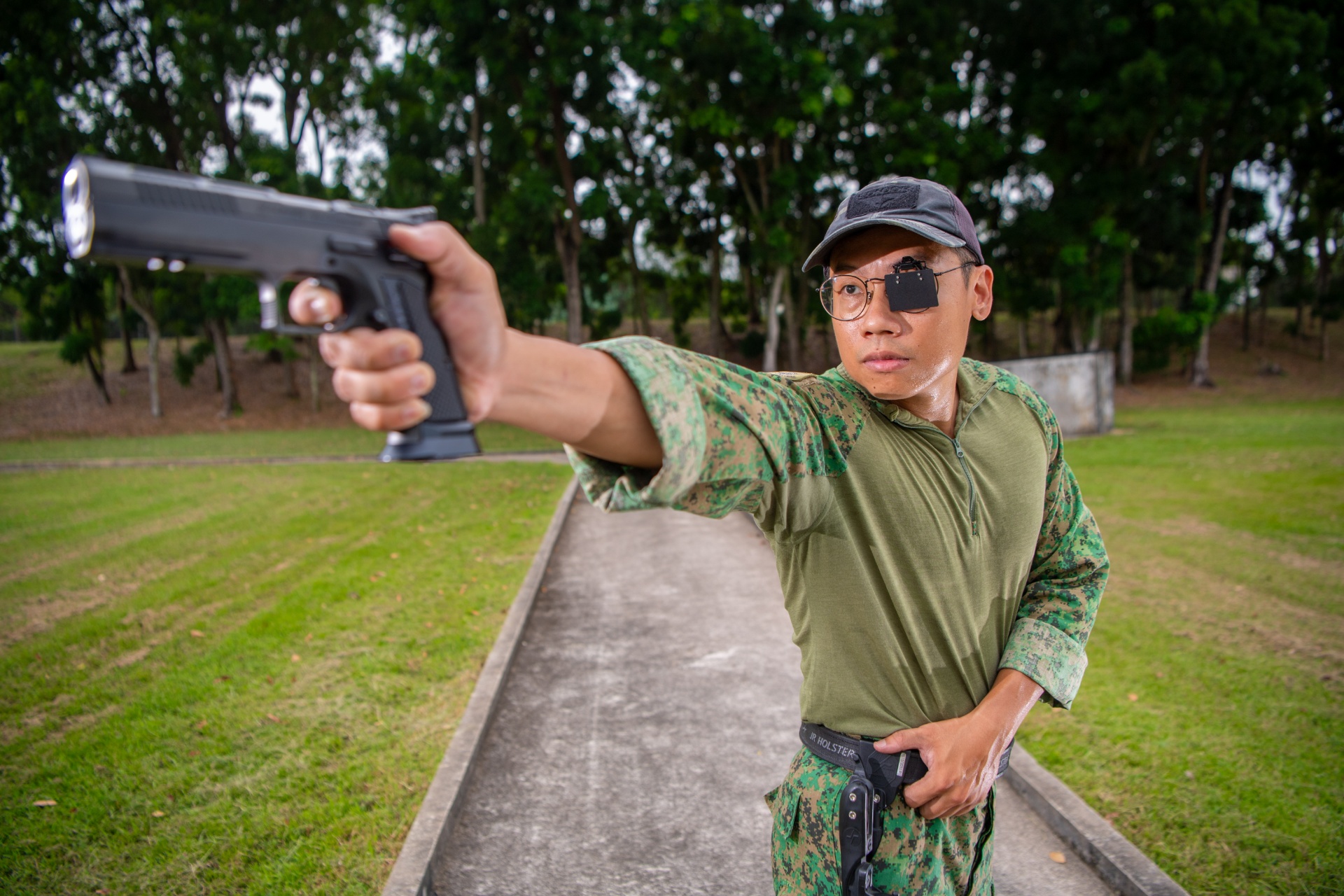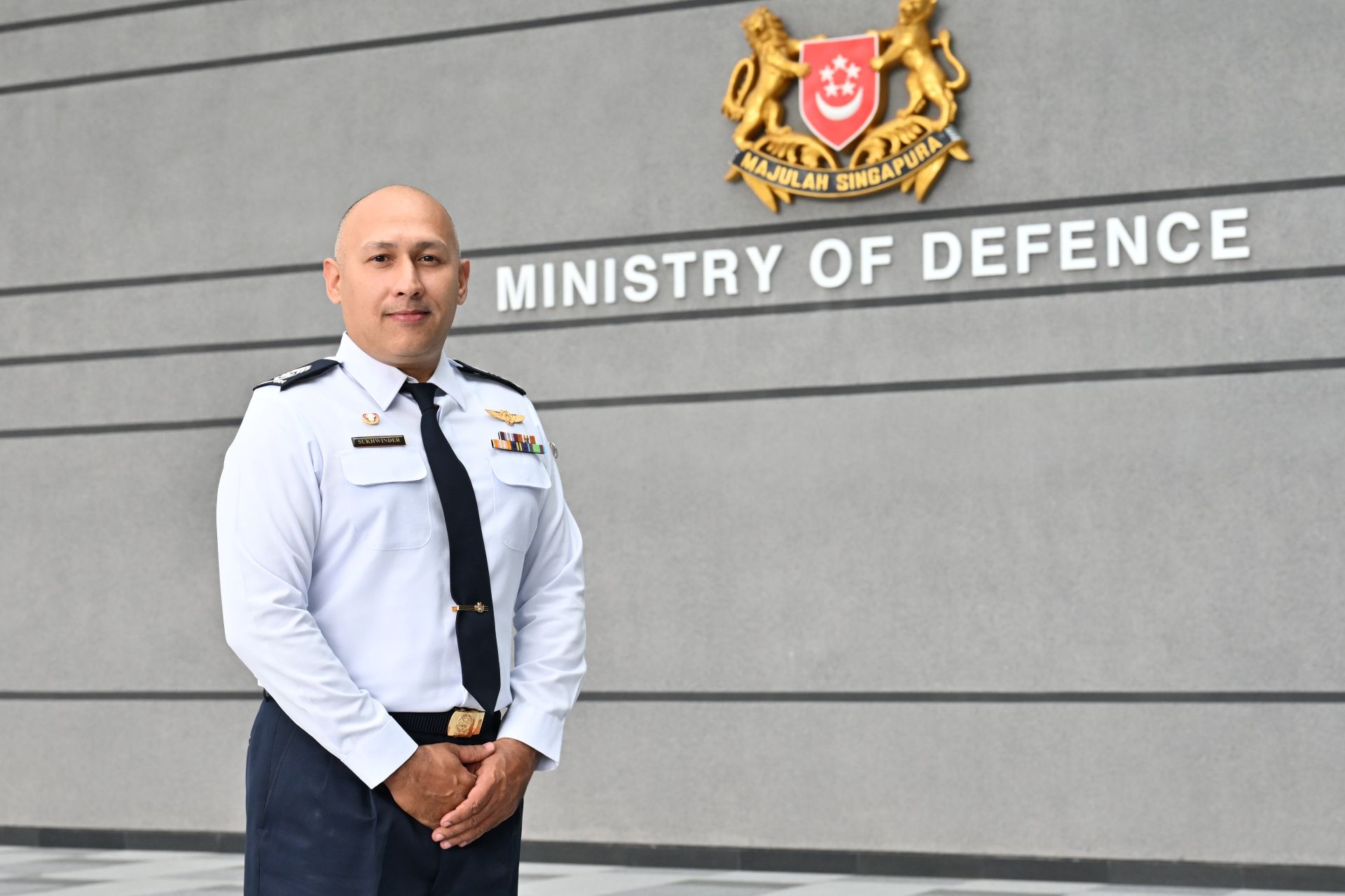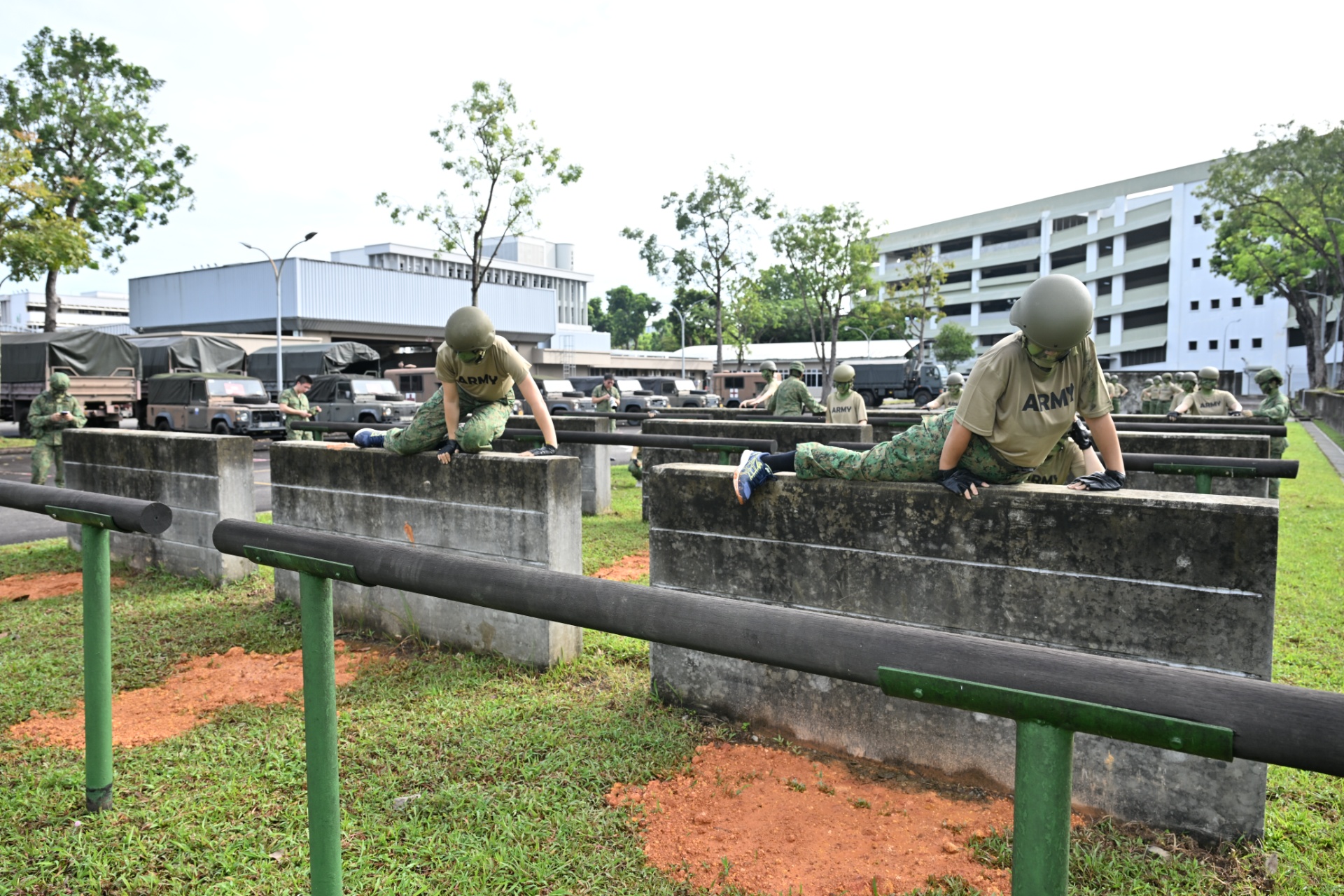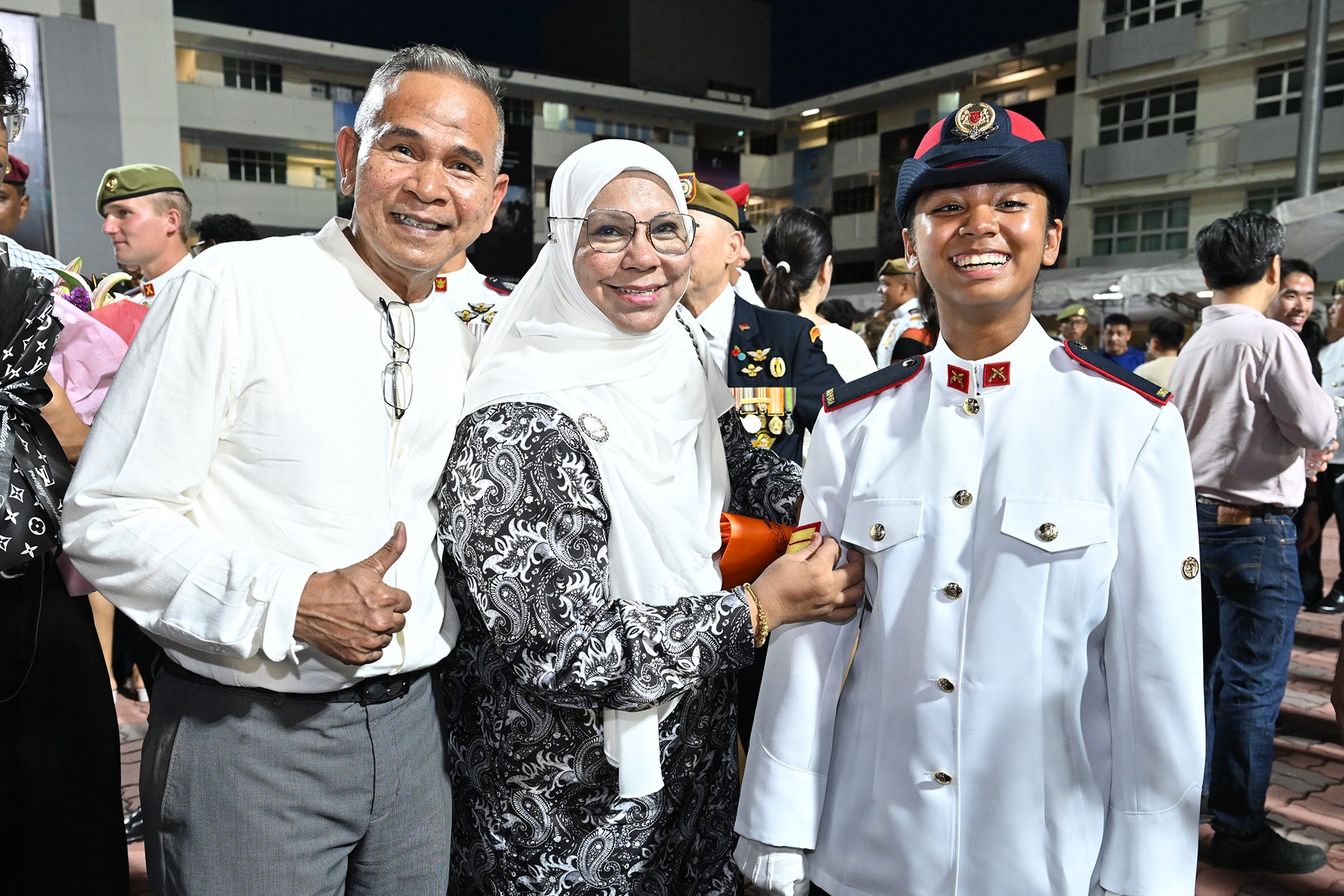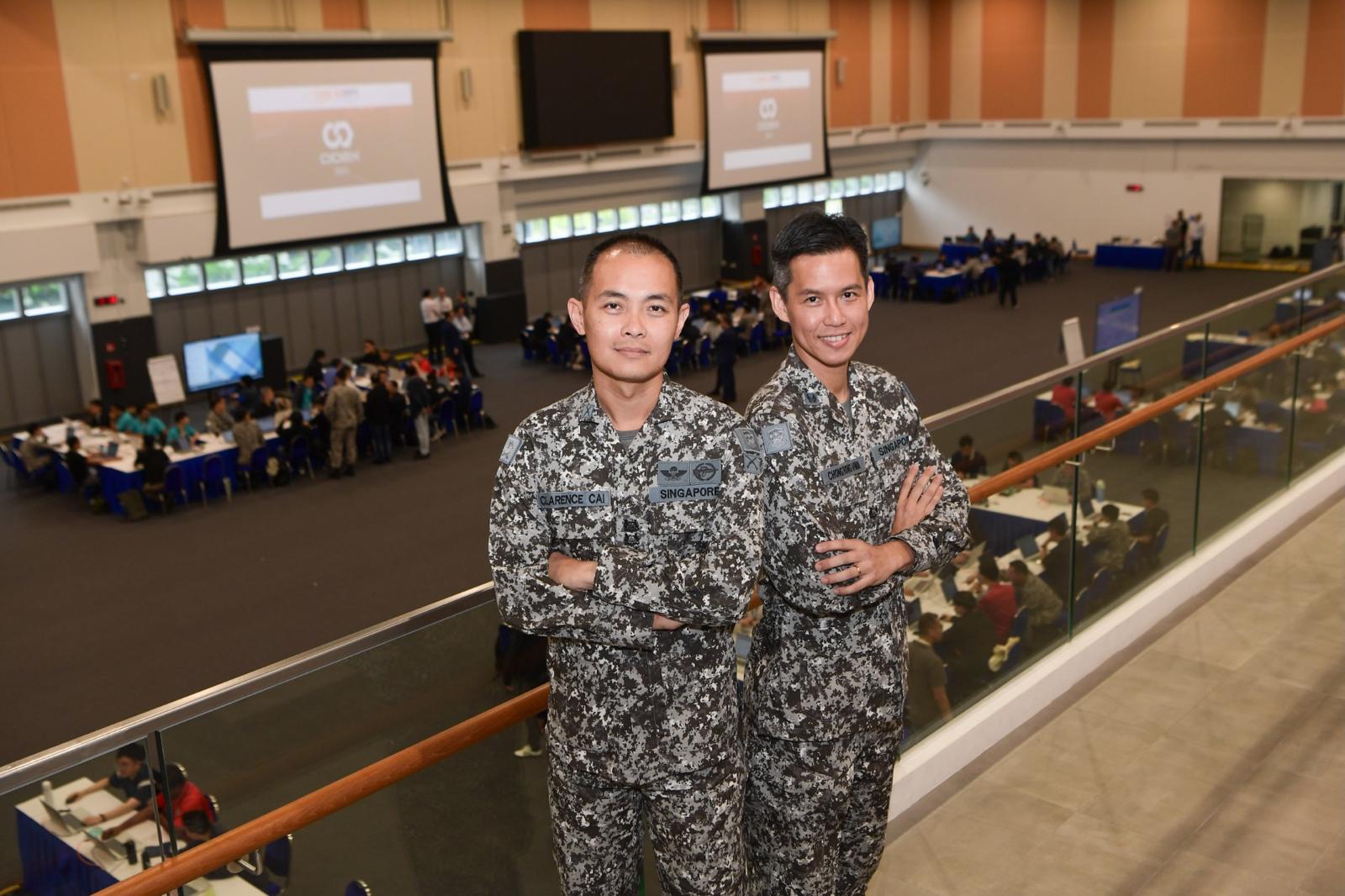WOMAN OF SHIELD
PIONEER journalist Thrina Tham learns to fight terror. But first, she has to take on the Army Deployment Force's (ADF's) ballistic shield.// PHOTOS PIONEER PHOTOGRAPHERS
See, you look like Black Widow, said an ADF instructor encouragingly.
I stared at him in disbelief — if anything, I was surely more of a clumsy half Bruce Banner-half Hulk.
I had certainly bulked up — I wore a load-bearing vest with two hard plates, a dummy P226 pistol on my right thigh, a Singapore Assault Rifle 21 slung over my shoulder, and over my head a balaclava and goggles, topped off with a helmet. Completing the get-up was a pair of gloves.
A highly skilled unit of Regulars, the ADF are tasked to respond to a multitude of threats, including terror attacks. I was definitely raring for action as I joined the ADF trainees in their peacetime contingency training at Nee Soon Camp.
(Almost) the real deal
As if all the extra gear wasn't enough, I gamely pointed out that it wasn't complete without the ADF's 13kg ballistic shield, used during counterterrorism operations for cover against firepower in an urban setting.
I attempted to lift it with my left hand (the rifle was on my right). The shield barely left the ground for a few seconds before I had to put it back down.
With an embarrassed smile, I switched to using my dominant right hand. Even then, I had to lean the shield against my body to support its weight.
Thankfully, the instructors had set aside a much-lighter wooden shield for me and I was able to keep it steady at eye level.
Now that I knew how to hold my shield, I was ready to use it.
Watch and wait
Imagine terrorists have attacked a building and you need to form a ring to isolate that area. That was our task: to form an impenetrable inner cordon by setting up two-man observation posts at the building's entry and exit points.
My buddy 1st Sergeant (1SG) Yap and I identified a concealed position between two large vehicles and crouched behind our shield in a high kneel position. Then, the wait began.
As the minutes passed, my knees started to hurt from kneeling on the gravel and my shoulders were aching from the load of the vest.
“How long are we gonna stay like this?” I asked 1SG Yap.
“This is the most sustainable position, so we will stay here to provide intel until further instruction,” he replied.
But I wasn't sure how much longer I could sustain the strain on my knees — it was so distracting that I could barely keep watch.
I was almost relieved when we spotted a terrorist at the window. 1SG Yap reported the sighting and we were told to stay hidden and continue observing.
No action? I was disappointed. But maintaining an observation post was sometimes more of a “waiting time game”, explained 1SG Yap.
As the eyes on the ground, it was our job to feed intel back to headquarters.
Firm control
We got into the Peacekeeper Protected Vehicle (PRV) for the next station: the Inner Cordon Control Point. The set-up acts as a checkpoint to control the flow of vehicles in and out of the cordoned-off area and prevent potential terrorists from leaving the incident site.
After a quick discussion, the team streamed out of the PRV to perform the assigned tasks — 1SG Yap and I put up no-entry signs while the rest deployed the tyre spike strips. We had our checkpoint ready in no time.
Two “onlookers” soon approached and claimed to be from the media. I gave an uncertain look to 1SG Yap, who immediately asked for their credentials.
While 1SG Yap had their documents checked, one of the men became impatient and started taking photos of the scene.
“No photography please!” I ordered. To my relief, the men backed off without causing further trouble.
Checks completed, 1SG Yap confirmed that the media could not access the area, as it was restricted to security agencies and other support personnel. Thank goodness we did not let them through!
This was just one of the easier scenarios that the ADF has to deal with. In other cases, onlookers might be more demanding or even charge towards them in a vehicle.
Storming the room
On the second day, we headed to the Neo Tiew training facility for room clearing exercises. I was happy to be out of the sun, but as my instructor, Master Sergeant (MSG) Ang, took me through the formation movement, I realised this wasn't going to be any easier.
Entering a room may seem like the simplest thing in the world — but not when it comes to military operations.
My buddy, carrying the shield, would charge straight into the room. As the first person behind him, I had to remain in close contact, identify his blind spot and move to cover him.
After a few rounds of practice, I was ready to join the other trainees in their drill.
The mission: for two teams of four to clear a four-room apartment. Team A stormed in with us, while we (in Team B) stacked up behind them.
As we entered the hall, a masked terrorist stepped out from one of the rooms, his arms raised in surrender.
I froze, but Team A swooped in to take him down. Our team commander then reminded us to clear the remaining rooms.
Throughout the hectic frenzy, I felt reassured by my commander's voice as we went through the rooms.
“Room 1, clear!”
“Room 2, clear!”
Finally, we reached the last room, where we were greeted by a simulated time bomb.
Before I could react, our commander shouted: “IED (improvised explosive device)! Everyone out!” Adrenaline pumping, I raced out of the apartment with the troops.
When we reached the safety point, Team A was already waiting there with the terrorist in restraints.
The training drill was a success for the team — but how did I do? MSG Ang's verdict: “Looks like you're slowly getting the hang of clearing rooms. Good job!”
Maybe I'm ready to join the Avengers after all.
ANTI-TERROR SKILL: SEARCH AND ARREST
I try my hand at the basic steps and voice commands for searching and arresting a suspect in the event of an attack. It was tough!
WALL SEARCH
1. "Raise your hands. Turn around and face the wall!" I get the suspect to put his hands on the wall and to spread his feet wide with his toes out. This puts him in an uncomfortable position so that he does not run off.
2. “Are you carrying any sharp objects?” I check that the suspect does not have anything sharp on him before informing him that I will begin the search. As I carry out the search, I have to keep my forearm on his back and my knee against his leg to put pressure on him and maintain control.
3. I start the search from his shoulder down to his shoe, checking his pockets and the side of his clothes. I search one side before repeating the process on the other. This process makes sure that I don’t miss anything out.
GROUND SEARCH AND ARREST
1. “Face the wall! Now put your left hand on your back.” I get the suspect to lie down and turn his face away from me, so that he is unable to see my next move. I then ask him to put one hand on his back as I prepare the handcuffs.
2. I restrain the suspect by putting some of my weight on his back in a kneeling position. I then tighten the cuffs behind the notches of his wrists so that it’s impossible to slip out.
3. I use one leg to step over the suspect as I turn him to his side, then move into a high kneel to keep his neck firmly locked. I then carry out the search on his side and roll him on to the other side to repeat.
